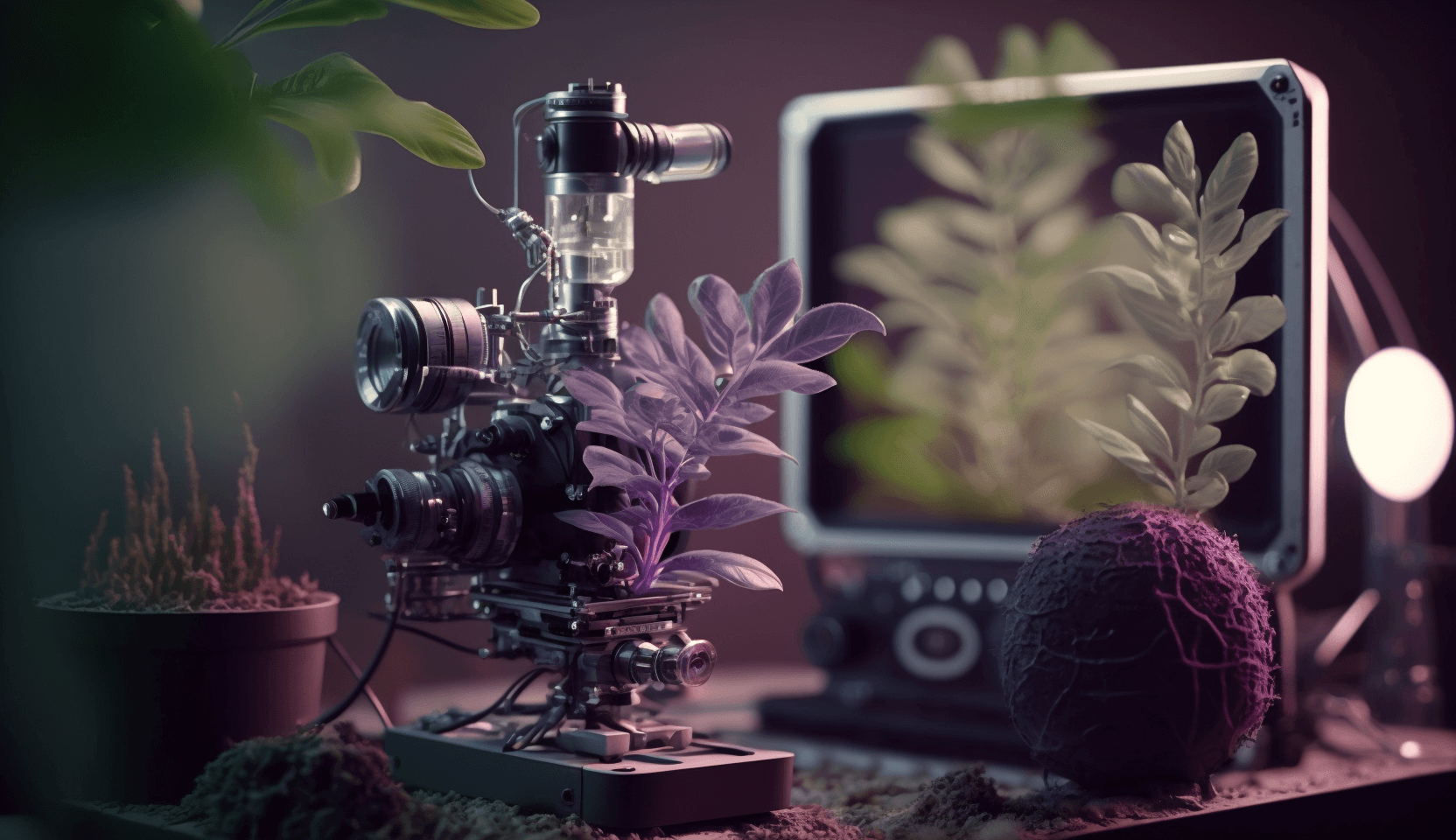🌿 Wen Plants Cry, Dis How Dey Sound 😢
Scientists wen record da poppin’ noizes dat plants make wen dey stressed, like wen dey stay thirsty or wen dey get cut. Humans, we get all kine ways fo’ express our unhappiness: we grumble, complain, moan. You might tink gotta have one mout’ fo’ do dat. But, recent plant research show dat one mout’ no even necessary. 🌱🔊
Stressed plants make audible sounds dat can be heard from feet away, an’ da kine sound dey make get connection to da kine bad day dey gettin’. Da results wen get published in da journal Cell. 📚
Fo’ be clear, da sounds dat da stressed plants make not da same as da kine nervous mumbles you might make if you get one big deadline at work. Da researchers tink da nervous, poppin’ noise might be one side effect of cavitation, wen small bubbles burst an’ make mini-shock waves inside da plant’s vascular system, kinda like wen you crack your knuckles. 💥🌿
“Cavitation probably da reason fo’ most of da sounds,” sed Lilach Hadany, one biologist at Tel Aviv University in Israel. Plants interact wit’ organisms dat make sounds all da time, like bees dat buzz, an’ dey also communicate wit’ odda life-forms, including odda plants, by sending out chemicals called volatiles. But wen it came to research on plants detecting or making audible sounds, da literature nevah have not’ing. 🐝🌼
Dr. Hadany wen get bugged by one question: “Da problem of plants an’ sounds.” Afta she met Yossi Yovel, who wuz studying bat sounds at Tel Aviv, dey wen team up fo’ try solve da question togetha. Dey wen focus on tomato an’ tobacco plants cuz dey easy fo’ grow an’ get well-known genetics. 🍅🦇
Dey put da plants in wooden soundproof boxes wit’ two microphones pointing at da stems, ready fo’ record any kine sound, from one soft whisper to one loud slam poetry. Da researchers wen find dat not only da plants make sounds, but dey wen make moa noise wen dey wuz thirsty or wen dey wen cut dea stems (like wen one herbivore attack). 🎤🌱
Da researchers wen pick up da same sounds from plants in one greenhouse, too. Dey wen detect sounds made by odda greenery, like grapevines an’ wheat. 🍇🌾
Da upset plants nevah jus’ make noise fo’ any kine reason but raddah made specific complaints dat matched da kine stress dey wuz unda. One machine-learning program could tell, wit’ 70% accuracy, if da plant wuz grumbling cuz dey wuz thirsty o’ at risk fo’ get cut. 💻🌿
“Da fact dat da plants make different noises wit’ some info, dass da main contribution of dis study,” sed Richard Karban, one ecologist at da University of California, Davis, who nevah work on da research. “I tink it goin’ move da field forward.” 📈
Da irritated plants no make sounds dat humans can hear – dey too high-pitched, an’ researchers had to process ’em so we can hear ’em now. But da sounds stay in da range dat odda animals, like mice an’ moths, can hear. An’ den, if da popping sounds can be heard up to 16 feet away, you gotta wonda if odda plants stay listening to da drama of dea neighbors. 🐁🦋
Dr. Hadany’s group wen show in one 2019 paper dat some flowahs respond to da sound of approaching pollinators by making moa nectar. Finding out if get any odda organisms dat respond to da noise made by stressed-out plants, as well as maybe using da info dat da noises suggest about da plants’ conditions, dass one important next step. 🌺🐝
Dr. Karban tink odda plant biologists might get doubts about da implications of da results but sed dat dey show da surprising sophistication of plants. As sedentary organisms, plants stay “exquisitely aware of dea environments,” he said. 🌿🤔
So afta you read about dis study, you might start wond’ring if da houseplant on your windowsill stay crying out loud about da conditions you wen leave ’em in. 😢
NOW IN ENGLISH
🌱Plants Get Vocal, Express Discontent with Unhappy Sounds🔊
When humans are discontent, we grumble, complain, or moan. It’s easy to assume that expressing frustration requires a mouth, but recent research in the plant kingdom says otherwise. Stressed plants make audible sounds that can be heard from several feet away, and the type of sound corresponds with their specific troubles. The results of this study were published in the journal Cell. 📚
It’s important to note that the sounds made by stressed plants are not like human mumblings. Researchers suspect the nervous, popping noises are actually a byproduct of cavitation. Cavitation occurs when tiny bubbles burst, creating mini-shock waves inside the plant’s vascular system—similar to what happens when you crack your knuckles. 💥
Lilach Hadany, a biologist at Tel Aviv University in Israel, believes that cavitation is the most likely explanation for most of the sounds plants make. Although plants interact with sound-producing organisms like buzzing bees and communicate by emitting chemicals, research on plants detecting or producing audible sounds has been limited. Dr. Hadany and Yossi Yovel, who studied bat sounds, teamed up to explore this question. They focused on tomato and tobacco plants for their ease of growth and well-understood genetics. 🍅🌿
The plants were placed in wooden soundproof boxes with microphones aimed at their stems. Researchers found that the plants not only made sounds, but they were significantly noisier when dehydrated or when their stems were cut (simulating herbivore attacks). The same sounds were detected in a greenhouse and in other plants like grapevines and wheat. 🌾🍇
These frustrated plants didn’t randomly make noise but produced specific sounds corresponding to the stresses they experienced. A machine-learning program could correctly identify whether the plant was thirsty or at risk of decapitation with 70% accuracy. Richard Karban, an ecologist not involved in the research, believes this study will advance the field. 🤖
The sounds made by plants aren’t audible to humans, as they’re too high-pitched. However, they do fall within the hearing range of animals like mice and moths. As the popping sounds can be heard up to 16 feet away, it raises the question of whether other plants can “listen” to their neighbors’ woes. 🐭🦋
Dr. Hadany’s group previously demonstrated that some flowers respond to the sound of approaching pollinators by producing more nectar. Understanding if other organisms respond to the noises made by stressed plants is an important next step. 🌼🐝
Though some plant biologists may doubt the implications of these results, Dr. Karban emphasizes the surprising sophistication of plants. As stationary organisms, plants are incredibly aware of their environments. So, the next time you look at your houseplant, consider whether it’s quietly expressing its discontent about the conditions you’ve provided. 🏠🌿







